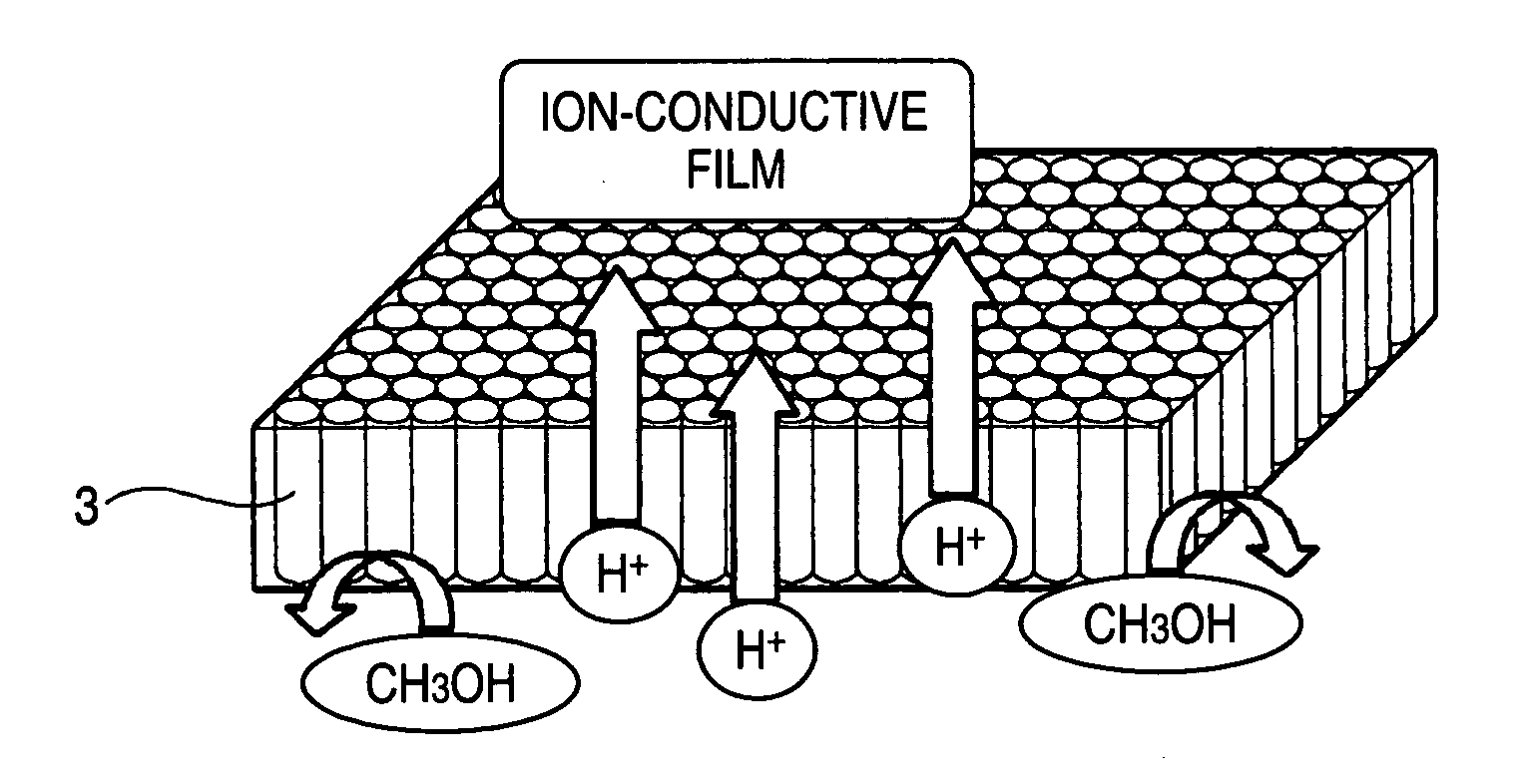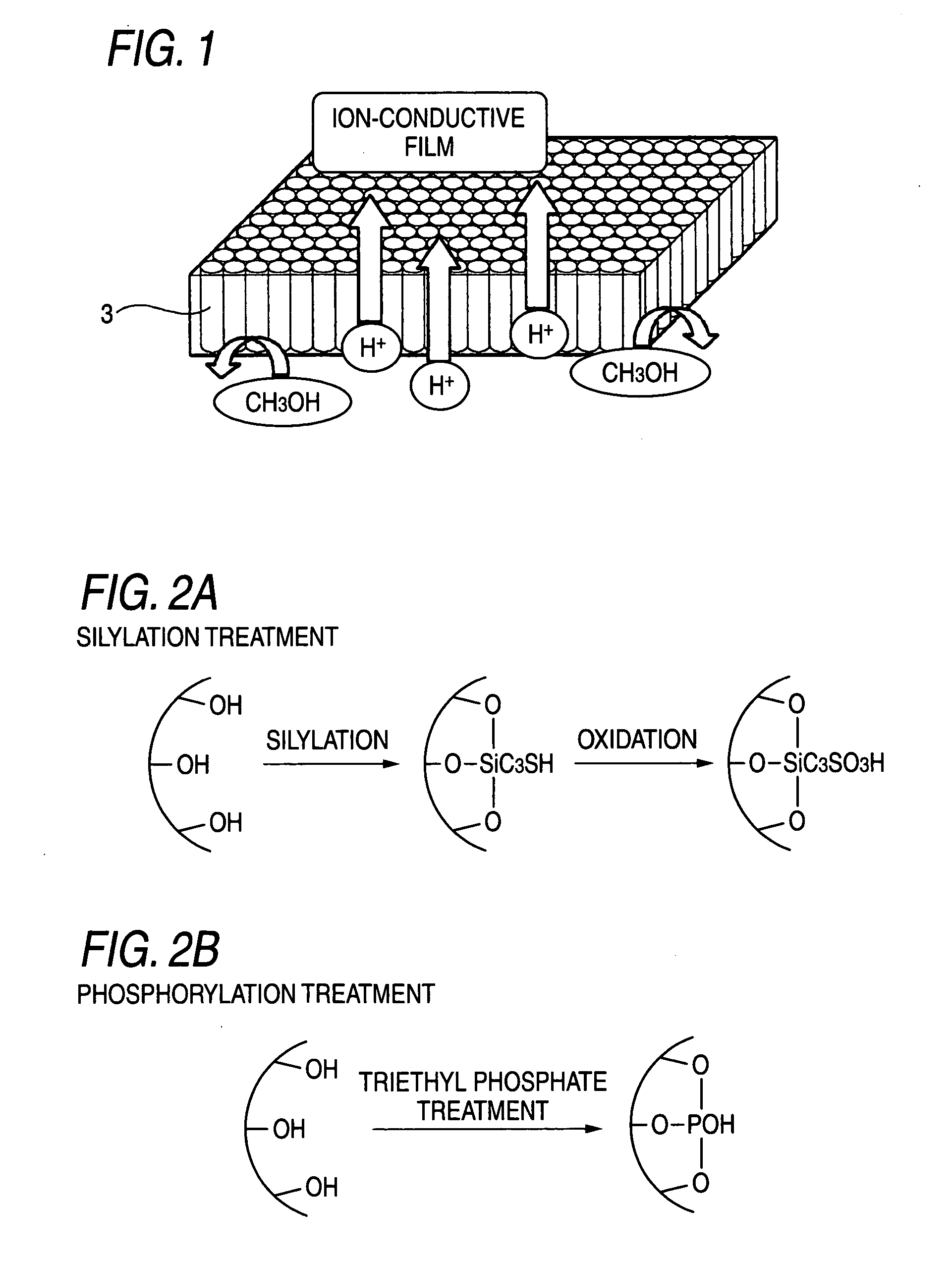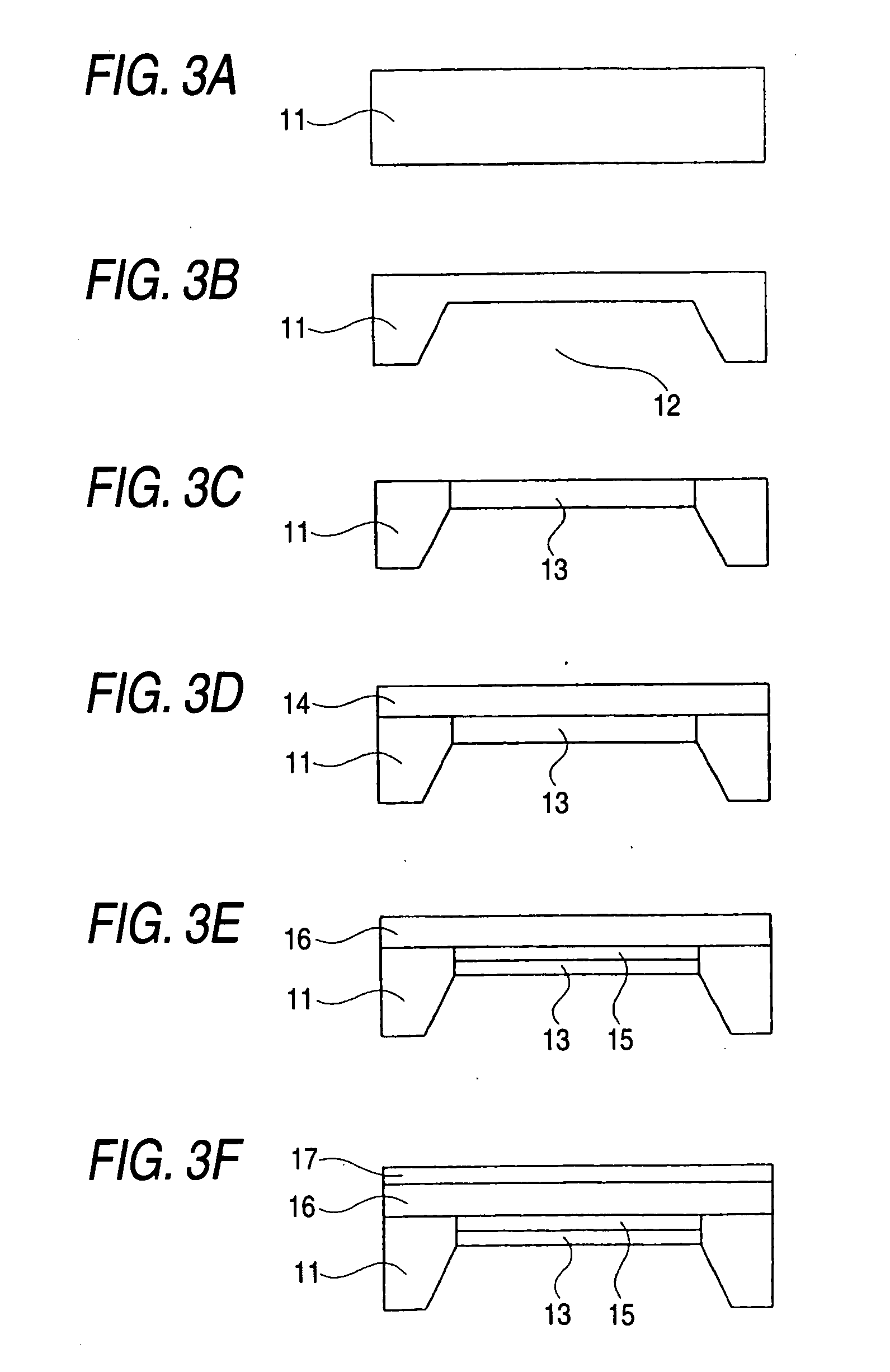Proton-conductive film, fuel cell comprising the same, and method for producing the same
a technology of proton-conductive film and fuel cell, which is applied in the direction of cell components, final product manufacturing, sustainable manufacturing/processing, etc., can solve the problems of reduced cathode potential, inability to satisfactorily use methanol, and low proton-conductive structure of films, and achieves high proton-conductive film production efficiency, pore size, and film production efficiency. favorable control
- Summary
- Abstract
- Description
- Claims
- Application Information
AI Technical Summary
Benefits of technology
Problems solved by technology
Method used
Image
Examples
embodiment 1
[0085] As in FIG. 1 showing its graphical view, one embodiment of the proton-conductive film of the invention is characterized by comprising a mesoporous film that has, as the principal component thereof, a crosslinked structure having a metal-oxygen skeleton with an acid group bonding to at least a part thereof, in which columnar pores are aligned in the thickness direction of the film to constitute proton paths with the inner wall thereof being coated with a silanol group. The presence of the silanol group reduces the pore size of the pores that constitute the proton paths 3, whereby the methanol perviousness through the film maybe reduced, while, on the other hand, the silanol group does not lower the proton conductivity of the film.
[0086]FIG. 2A is an enlarged schematic view showing an addition step of a silanol group, in which a silanol group is introduced into the columnar pore to be a proton path 3, and the pore size is reduced to prevent methanol crossover and the proton co...
embodiment 2
[0116] In the above Embodiment 1, the films are silylated after calcination. However, this embodiment is characterized in that silylation is first carried out prior to surfactant extraction by calcination, whereby an acid group (mercapto group) is introduced into the silicon-oxygen skeleton of a film, and thereafter the surfactant is extracted out by treatment with hydrochloric acid, as in FIG. 13 showing the flowchart of the process.
[0117] As in the flowchart shown in FIG. 13, a surfactant, cationic cetyltrimethylammonium bromide (C16TAB: C16H33N+(CH3)3Br), a silica derivative, TEOS (tetraethoxysilane), and an acid catalyst, hydrochloric acid (HCl) are dissolved in a mixed solvent of H2O / Et-OH (water-alcohol) to prepare a precursor solution in a mixer chamber. The molar ratio of the components as mixed to constitute the precursor solution is H2O:Et-OH:HCl:C16TB:TEOS=100:76:5:0.5:3. The mixture solution is applied onto the surface of the silicon substrate with a porous silicon 13 f...
embodiment 3
[0131] In the above Embodiment 1, the formation of the catalyst layer is attained by electrophoresis. In this embodiment, however, it may be attained by plating, as in the process chart of FIGS. 14A to 14G.
[0132] As in FIGS. 14A to 14C, a silicon substrate 11 is processed and thinned in the same manner as in the above Embodiment 1 to prepare a porous silicon 13.
[0133] Next, as in FIG. 14D, a catalyst layer 25 of a metal including platinum is formed by plating on the porous silicon 13.
[0134] Next, as in FIG. 14E, a mesoporous silica thin film (proton-conductive film) 24 is formed in which columnar pores are periodically aligned to be vertical to the surface of the silicon substrate and in which the inner wall of the pores is modified with a silanol group, like in the above Embodiment 1.
[0135] Further after this, as in FIG. 14F, a catalyst layer 26 of a metal including platinum is formed on the proton-conductive film 24, by plating.
[0136] As in FIG. 14G, a carbon particles-contai...
PUM
| Property | Measurement | Unit |
|---|---|---|
| thickness | aaaaa | aaaaa |
| pore size | aaaaa | aaaaa |
| pore size | aaaaa | aaaaa |
Abstract
Description
Claims
Application Information
 Login to View More
Login to View More - R&D
- Intellectual Property
- Life Sciences
- Materials
- Tech Scout
- Unparalleled Data Quality
- Higher Quality Content
- 60% Fewer Hallucinations
Browse by: Latest US Patents, China's latest patents, Technical Efficacy Thesaurus, Application Domain, Technology Topic, Popular Technical Reports.
© 2025 PatSnap. All rights reserved.Legal|Privacy policy|Modern Slavery Act Transparency Statement|Sitemap|About US| Contact US: help@patsnap.com



